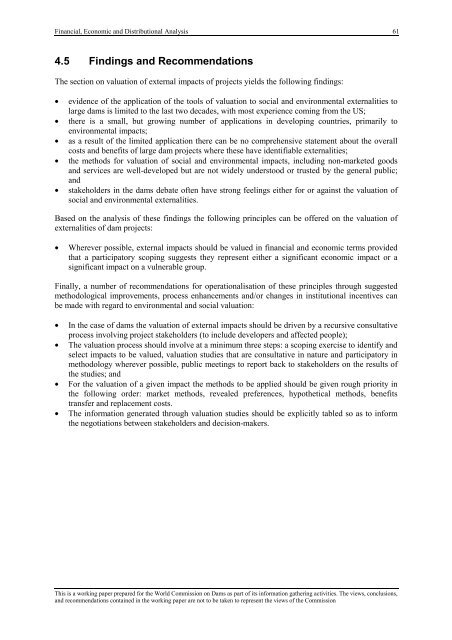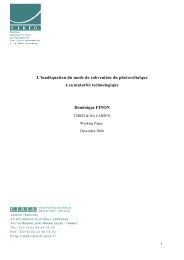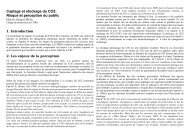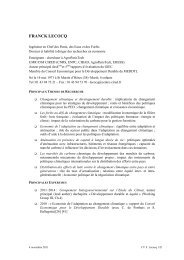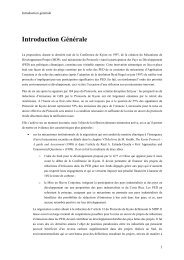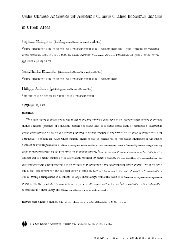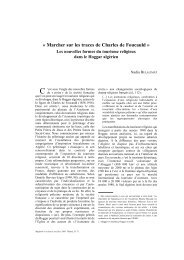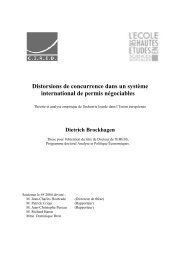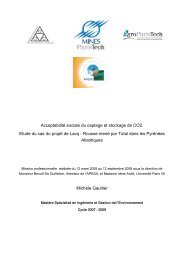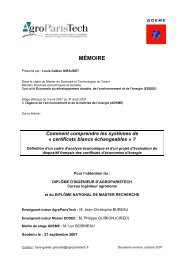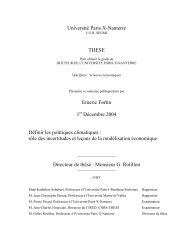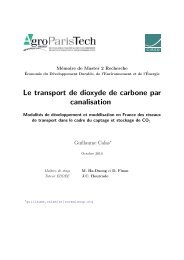Financial, Economic and Distributional Analysis - Centre ...
Financial, Economic and Distributional Analysis - Centre ...
Financial, Economic and Distributional Analysis - Centre ...
Create successful ePaper yourself
Turn your PDF publications into a flip-book with our unique Google optimized e-Paper software.
<strong>Financial</strong>, <strong>Economic</strong> <strong>and</strong> <strong>Distributional</strong> <strong>Analysis</strong> 614.5 Findings <strong>and</strong> RecommendationsThe section on valuation of external impacts of projects yields the following findings:• evidence of the application of the tools of valuation to social <strong>and</strong> environmental externalities tolarge dams is limited to the last two decades, with most experience coming from the US;• there is a small, but growing number of applications in developing countries, primarily toenvironmental impacts;• as a result of the limited application there can be no comprehensive statement about the overallcosts <strong>and</strong> benefits of large dam projects where these have identifiable externalities;• the methods for valuation of social <strong>and</strong> environmental impacts, including non-marketed goods<strong>and</strong> services are well-developed but are not widely understood or trusted by the general public;<strong>and</strong>• stakeholders in the dams debate often have strong feelings either for or against the valuation ofsocial <strong>and</strong> environmental externalities.Based on the analysis of these findings the following principles can be offered on the valuation ofexternalities of dam projects:• Wherever possible, external impacts should be valued in financial <strong>and</strong> economic terms providedthat a participatory scoping suggests they represent either a significant economic impact or asignificant impact on a vulnerable group.Finally, a number of recommendations for operationalisation of these principles through suggestedmethodological improvements, process enhancements <strong>and</strong>/or changes in institutional incentives canbe made with regard to environmental <strong>and</strong> social valuation:• In the case of dams the valuation of external impacts should be driven by a recursive consultativeprocess involving project stakeholders (to include developers <strong>and</strong> affected people);• The valuation process should involve at a minimum three steps: a scoping exercise to identify <strong>and</strong>select impacts to be valued, valuation studies that are consultative in nature <strong>and</strong> participatory inmethodology wherever possible, public meetings to report back to stakeholders on the results ofthe studies; <strong>and</strong>• For the valuation of a given impact the methods to be applied should be given rough priority inthe following order: market methods, revealed preferences, hypothetical methods, benefitstransfer <strong>and</strong> replacement costs.• The information generated through valuation studies should be explicitly tabled so as to informthe negotiations between stakeholders <strong>and</strong> decision-makers.This is a working paper prepared for the World Commission on Dams as part of its information gathering activities. The views, conclusions,<strong>and</strong> recommendations contained in the working paper are not to be taken to represent the views of the Commission


